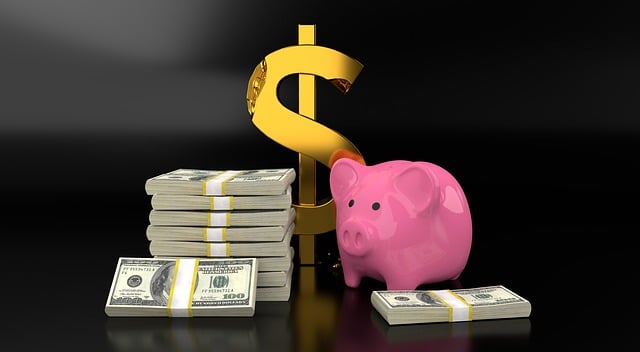Subsidized and Unsubsidized Federal Student Loans

The student loan approval process and how student loans work can be confusing for those preparing to enter college or university. Due to higher education costs, more than 43 million students nationwide have taken advantage of the Federal Student Loan program.
Federal student loans can be either subsidized or unsubsidized, offering various benefits. Loans can have low interest rates, deferment plans, and flexible repayment options. Federal loans tend to have lower interest rates than private loans.
To qualify for a federal student loan, borrowers must attend a school that is part of the Federal Direct Loan program, be a U.S. citizen or have an eligible immigration status with a Social Security number, have a high school diploma, or have completed a GED program, be in good academic standing currently, and not be in default of other loans.
What Is the Difference Between Subsidized and Unsubsidized Loans?
According to StudentAid.gov, “Direct Subsidized Loans and Direct Unsubsidized Loans are federal student loans offered by the U.S. Department of Education (ED) to help eligible students cover the cost of higher education at a four-year college or university, community college, or trade, career, or technical school. “
- Subsidized loans include a financial need requirement and according to Sallie Mae, the government will pay the interest for you while you’re in school, hence the term “subsidized loan.”
- Subsidized student loans are offered for undergraduate degrees only. A Direct Subsidized Loan or Direct Unsubsidized Loan is often called a Stafford Loan or Direct Stafford Loan.
- Subsidized loans and loan amounts are granted based on the borrower’s financial needs. However, they must still be paid back with interest.
- In the case of subsidized loans, the government helps pay back some of the interest while you maintain half-to-full-time enrollment and for six months after you graduate.
- Subsidized loans do not accrue interest the student will be responsible for until their standard payment plan begins six months after graduation.
- Graduate students can receive unsubsidized loans. Interest accrues starting from day one with an unsubsidized loan.
- Unsubsidized loans are available to students without the financial need requirement for both graduate and undergraduate students. Limits for subsidized and unsubsidized loans may differ.
How Do I Apply for Federal Student Loans?
To apply for subsidized and unsubsidized loans, applicants must complete the FAFSA, or Free Application for Federal Student Aid. The application can be completed online or at your university’s Financial Aid office.
To complete the application, you will need information about your finances, your parents’ income, and your family contributions. This information will help decide which type of loan and how much you qualify to borrow. Many students will qualify for a combination amount from the two types of loans.
Read next: Online Colleges for Military Members
How Much Can You Borrow?
First-year undergraduate Students may borrow up to $5,500 if they are still dependent on their parents or family. Up to $3,500 of that amount can be subsidized. Students who live independently of their parents may borrow up to $9,500, of which $3,500 can be subsidized.
Each year of enrollment, the qualifying amount may increase as long as qualifications are met. Dependent students can qualify for $31,000 for unsubsidized loans and $23,000 for subsidized loans. Independent-labeled students may be eligible for up to $57,500 in unsubsidized amounts with $23,000 of that amount being subsidized.
Graduate Students can qualify for up to $138,500 in loans, including the amount borrowed for their undergraduate studies. Once you have exceeded these limits, you are not eligible for more FAFSA loans until some of your debt has been paid. Another option for funds is private loans.
However, be meticulous in checking on interest rates and details, as fraudulent and predatory loan practices can be difficult to spot in private loans.
How Do I Accept a Loan?
Seek the guidance of your college or university’s Financial Aid office to help you accept your loan. If your financial aid package includes federal student loans, your school will tell you how to accept the loan.
Suppose it is your first time receiving a Direct Loan. In that case, you will be required to complete entrance counseling, detailing what is involved in accepting and repaying your loan and ensuring your questions are answered before finalizing acceptance. When you complete this requirement, the university will be notified so that you may move forward.
You will also be asked to sign a Promissory Note, a contract agreeing to the loan’s terms and conditions.
Read next: Online Colleges For Military Members
How Will I Receive the Funds?
Typically, the school will receive the loan funds directly as they must be used for education purposes. The school will then apply the funds to your tuition and fees, then to your room and board, and finally to any leftover fees or costs of the studies. If there are remaining funds, they will then be turned over to you to utilize for other education expenses.
If your situation has changed and you must cancel your loan before any funds have been dispersed, contact your financial aid office as soon as possible.
How do I Repay my Federal Student Loans?
Borrowers have six months after graduation, leaving school or lowering enrollment to less than half time to begin repaying student loans. The loan servicer and possibly your school will reach out to you to notify you of when monthly payments will commence.
Once the repayment process starts, you will be on the Standard Repayment Plan. However, if circumstances require it, repayment can be adjusted or deferred. Typically, borrowers have ten years to repay their loans. If deferment is needed, the payment plan can be extended to 25 years.
Keep in mind that during this time, interest will accrue, and the faster you pay the loan, the less interest you’ll pay. Subsidized loan interest will not be charged the first six months after you finish school.
Read next: Online Colleges For Military Members
Student Loan Repayment Plans
Students will automatically be placed in a standard enrollment plan unless they request and meet the requirements for other repayment plans through their university or financial institutions. Other repayment plans include the Graduated Repayment Plan and the Saving on a Valuable Education (SAVE) Plan.
The Graduated Repayment Plan starts payments low and then gradually increases them to make it easier to pay accordingly while you advance in your career. The loans can still be paid off over the course of the ten-year term; however, interest will be higher this way than in the Standard Repayment Plan.
The SAVE Plan is income-based, so you can still meet your other financial needs while repaying your loan. The loan payment would be set at about 10% of your discretionary income, which can be readjusted as your income fluctuates. This will allow up to 25 years to repay the loans in total, but bear in mind that you will pay more interest this way than in the Standard Repayment Plan.
Additional Benefits to Using Federal Student Loans
Student loan interest is tax-deductible. For federal student loans, you may be permitted to deduct paid interest, which may reduce your taxable income and depending on the tax year, increase your tax refund. If you paid over $600, you may need to use Form 1098-E.
Tax laws are subject to change year over year and your experience may vary. Consult a tax expert for details. This article is not to be used as tax advise.
What Happens If I Have Trouble Repaying My Federal Student Loan?
If you cannot make your loan payments or are experiencing financial difficulty, you may opt to defer them or enter into forbearance. Forbearance implies lowering the loan payments. This can be done for 12 months but is not recommended as interest will continue to accrue during this time.
If you are having trouble repaying your loans, contact your loan servicer for additional options.
Certain careers may qualify you for partial or full student loan forgiveness through the government. Teachers, government workers, and those in high-demand fields may benefit from this; however, qualifications and deadlines change often. Reach out to your university to learn more.
Read next: Online Colleges For Military Members



